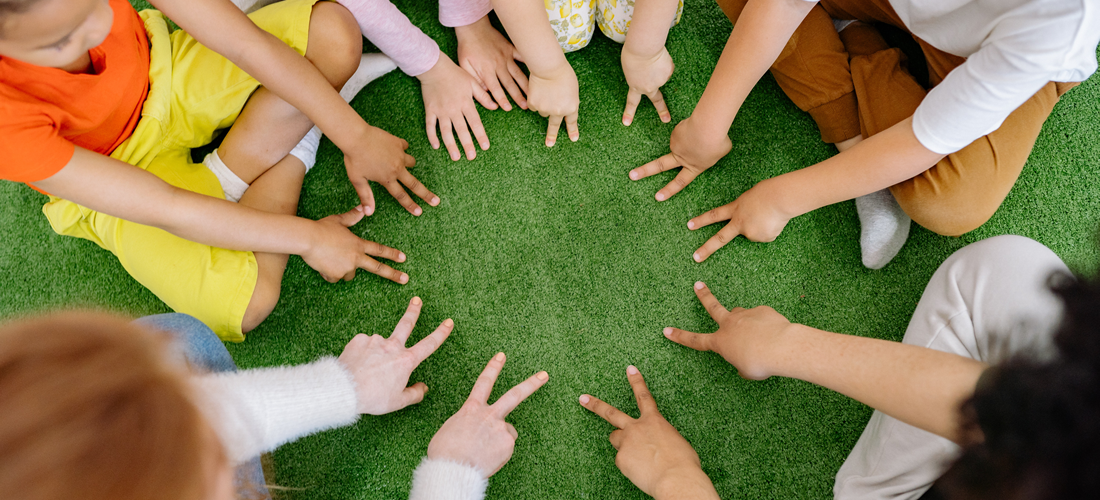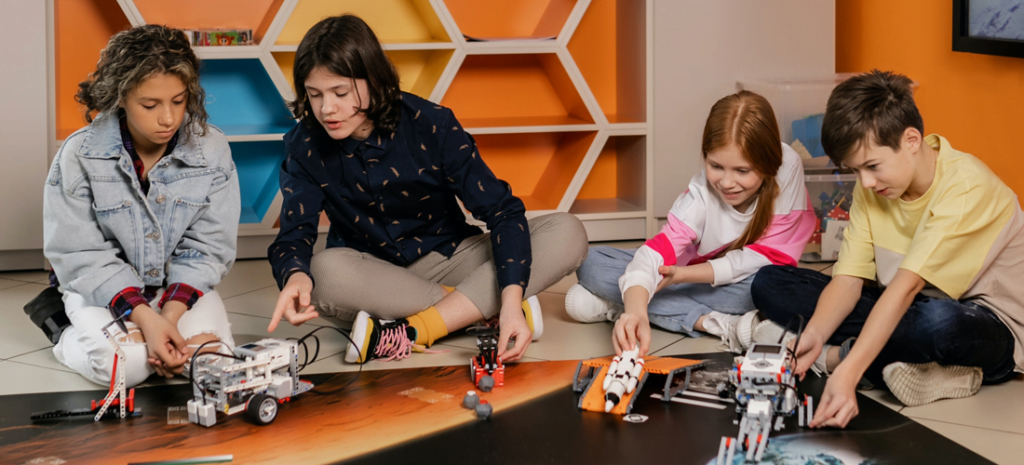More than ever, social emotional learning strategies are acknowledged as crucial elements of a holistic education, aiming to nurture not only academic prowess but also emotional intelligence and resilience. This post will guide you through effective techniques that foster empathy, self-awareness, and strong relationship skills in learners. So, whether you’re an educator seeking innovative teaching methods, or a parent aiming to instill these essential life skills in your children, join us as we journey through the transformative power of social emotional learning strategies.
Understanding Social Emotional Learning
Social emotional learning (SEL) refers to the process of developing skills and behaviors such as empathy, positive relationships, responsible decision-making, and effective handling of emotions. SEL is integral to a child’s development, helping them navigate their interactions with others and contributing to their overall mental and emotional well-being.
SEL is composed of five core components:
- Self-awareness: This involves understanding one’s own emotions, goals, and values. It’s about recognizing one’s strengths and limitations with a well-grounded sense of confidence and optimism.
- Self-management: This is about successfully regulating one’s emotions, thoughts, and behaviors in different situations. It involves managing stress, controlling impulses, and setting and working toward personal and academic goals.
- Social awareness: This entails the ability to understand the perspectives of others and empathize with people of diverse backgrounds and cultures. It also involves understanding social norms for behavior in different settings.
- Relationship skills: These are the skills needed to establish and maintain healthy and rewarding relationships with diverse individuals and groups. They include communication, social engagement, relationship-building, and conflict resolution.
- Responsible decision-making: This involves making constructive and ethical choices about personal behavior and social interactions based on ethical standards, safety concerns, social norms, and the well-being of others. It requires evaluating the consequences of various actions and making decisions in a thoughtful, respectful manner.
Proven Social Emotional Learning Strategies for Success
These Social Emotional Learning strategies are adaptable and can be applied in various settings, from classrooms to homes and communities. Implementing them can have a profound and lasting impact on an individual’s social-emotional development and overall success in life.
1. Emotion Recognition Activities
This approach focuses on helping students identify and understand their feelings and the emotions of others. By playing games, engaging in role-play scenarios, or through the use of emotion flashcards, students learn to recognize a range of emotions, from happiness to sadness, anger to fear, and much more.
Not only does this enhance emotional literacy, but it helps children navigate their interpersonal relationships with greater empathy and understanding. In a nutshell, Emotion Recognition Activities offer a fun, interactive, and practical method to bolster social-emotional learning among students.
2. Conflict Resolution Skills
This strategy empowers students with the skills to identify the root cause of conflicts, understand different perspectives, and formulate win-win solutions. By practicing conflict resolution, students are able to foster better relationships with their peers, leading to a more harmonious school environment. Moreover, these skills are not limited to the school setting but are valuable life skills that they will carry into adulthood, helping them in their personal and professional relationships.
3. Mindfulness and Relaxation Exercises
These techniques help students cultivate an inner sense of calm, focus, and emotional balance. Mindfulness exercises, like deep breathing or guided imagery, foster self-awareness and present moment awareness, key tenets of social-emotional learning. On the other hand, relaxation exercises, such as progressive muscle relaxation or yoga, aid in reducing stress and anxiety levels, promoting mental health and emotional well-being.
Hence, integrating mindfulness and relaxation exercises into the curriculum not only enhances academic performance but also nurtures well-rounded individuals who are better equipped to navigate life’s challenges.
4. Cooperative Learning
Cooperative Learning is a tried and true social-emotional learning strategy that educators utilize to enhance not only academic growth but also emotional intelligence among students. This strategy involves students working together in small groups or teams to attain common academic goals. The beauty of Cooperative Learning lies in its ability to foster a sense of community, build empathy, and encourage open communication.
As students work together to solve problems or tackle projects, they learn to understand and respect different perspectives, hone their conflict-resolution skills, and develop a deeper sense of responsibility. Through this collaborative journey, students acquire key social-emotional skills that are pivotal for their overall development and success.
5. Gratitude Journals
Gratitude Journals have emerged as a powerful tool in the realm of social-emotional learning strategies. The concept is simple yet profound: students are encouraged to keep a journal where they regularly note down things they are thankful for. This practice promotes a positive mindset, fostering an environment of acknowledgment and appreciation. It aids in cultivating empathy as students begin to realize and appreciate the efforts of people around them.
Moreover, it encourages mindfulness and introspection, helping students understand their feelings. So, if you’re seeking an easy-to-implement, effective, and cost-efficient social-emotional learning strategy, Gratitude Journals might just be the answer you’re looking for.
6. Family Meetings
Family meetings are a proven and effective social-emotional learning strategy. Implemented well, they create a safe space for all family members to express their emotions, share their thoughts, and address conflicts in a constructive manner. This strategy not only enhances communication and builds trust within the family, but also teaches important life skills such as empathy, patience, and problem-solving.
By continuously engaging in these meetings, children learn to understand and manage their emotions, and gain a better appreciation of others’ feelings. In a nutshell, family meetings are a powerful tool to nurture emotional intelligence and social skills in a supportive and loving environment.
7. Active Listening
Active listening is a proven social-emotional learning strategy that is both powerful and transformative. It’s more than simply “hearing” what someone is saying. It’s about being fully present, demonstrating empathy, and understanding the speaker’s emotions and intentions. This strategy encourages learners to delve deeper into conversations and promotes a culture of respect and inclusivity.
By practicing active listening, students not only develop better communication skills but also foster deeper connections with their peers. This enhances their emotional intelligence, contributing significantly to their overall social-emotional development.
8. Role Modeling
Role modeling is a powerful social-emotional learning strategy that promises significant influence on students’ behavior and attitudes. By embodying the values, attitudes, and behaviors we want students to adopt, educators serve as living examples to emulate. This strategy is particularly effective because it is not based on theoretical lessons, but real-life examples. Students are more likely to adopt behaviors when they see them in practice and understand their positive impact.
Therefore, educators who actively demonstrate empathy, resilience, self-awareness, and effective communication, support students in developing these crucial life skills themselves. This hands-on, observational approach to learning helps students translate social-emotional competencies into their daily interactions and experiences.
9. Creating a Safe and Supportive Environment
Creating a safe and supportive environment is a cornerstone of effective social-emotional learning strategies. This strategy involves fostering an atmosphere where students feel cared for, valued, and comfortable expressing their feelings. In such an environment, students are more likely to engage authentically, openly share their thoughts, and feel safe exploring their feelings. This, in turn, enhances their ability to understand and manage their emotions, demonstrate empathy for others, and form positive relationships.
A supportive environment also helps in cultivating a positive attitude towards learning and allows students to feel confident in their abilities, leading to better academic performance. Implementing this strategy involves consistent encouragement, open communication, and promoting inclusivity and mutual respect.
10. Extracurricular Activities
Extracurricular activities, often overlooked, can be a powerful tool for promoting social-emotional learning. They offer students an informal environment to explore interests, nurture talents, and interact with peers, all key elements in fostering emotional intelligence and social skills. When students engage in clubs, sports, or community service activities, they learn about teamwork, empathy, responsibility, and management of emotions, all of which are fundamental for their comprehensive growth.
Participating in these activities also helps students to build self-esteem and gain a broader perspective of the world. So, integrating extracurricular activities into a student’s learning journey proves to be a formidable social-emotional learning strategy.
11. Volunteering Opportunities
Volunteering Opportunities provide a valuable platform for the practical application of social-emotional learning strategies. These opportunities encourage students to step out of their comfort zones, interact with various demographic groups, and contribute to their communities. This critical exposure sparks a deeper understanding of empathy, cooperation, and civic responsibility. It also provides a real-world context for students to develop and improve their communication, problem-solving, and leadership skills.
By volunteering, students experience first-hand the positive impacts of their actions, reinforcing the essential social-emotional learning values of kindness, respect, and making a difference in the world.
12. Peer Mentorship Programs
These programs cultivate a supportive learning environment where students help each other grow. The peer mentoring process encourages the development of key social-emotional skills such as empathy, interpersonal communication, and conflict resolution. As mentors guide their peers, they not only reinforce their own understanding but also boost their self-confidence and leadership skills.
Meanwhile, mentees benefit from personalized attention and guidance, fostering a sense of belonging and mutual respect. Thus, peer mentorship programs serve as a powerful tool for nurturing vital social-emotional competencies within the educational setting.
Challenges in Implementing Social Emotional Learning Strategies
Implementing social emotional learning strategies isn’t always a smooth process. There are several challenges that educators often grapple with:
- Limited Resources: Schools may lack the necessary resources, both in terms of materials and trained staff, to effectively implement social emotional learning strategies. This includes suitable curriculum material and adequately trained teachers who can weave SEL into their day-to-day teaching.
- Lack of Understanding: Often, there’s a misconception that social emotional learning is a separate subject, rather than being integrated across all subjects. This misunderstanding can make implementation challenging, as it sidelines social emotional learning as less important than other areas of learning.
- Resistance to Change: As with any new initiative, there can be resistance from both staff and parents. Some may question the value of social emotional learning, or be hesitant about changing traditional teaching methods.
- Measurement: Unlike subjects like math or reading, assessing progress in social emotional learning can be difficult. Traditional grading systems often don’t apply, and developing new measurement tools requires time and expertise.
By understanding and addressing these challenges, schools can create an environment more conducive to social emotional learning.
Conclusion
Bolstering social-emotional learning strategies in our educational environments is not just beneficial, but essential. These strategies foster resilience, empathy, and effective communication, skills that are fundamental in today’s interconnected world. As we advocate for holistic education, let’s remember that the emotional intelligence nurtured through these strategies is just as important as academic proficiency.
So, let us continue to invest, innovate, and implement these strategies, laying the groundwork for our future generations to thrive both personally and professionally. Remember, the journey of social-emotional learning is continuous and ever-evolving. Keep learning, keep growing, and keep spreading the power of empathy and understanding.
You might also like:
- 15 Powerful Kinesthetic Learning Strategies to Unlock Academic Success
- 13 Effective Self-Directed Learning Strategies

